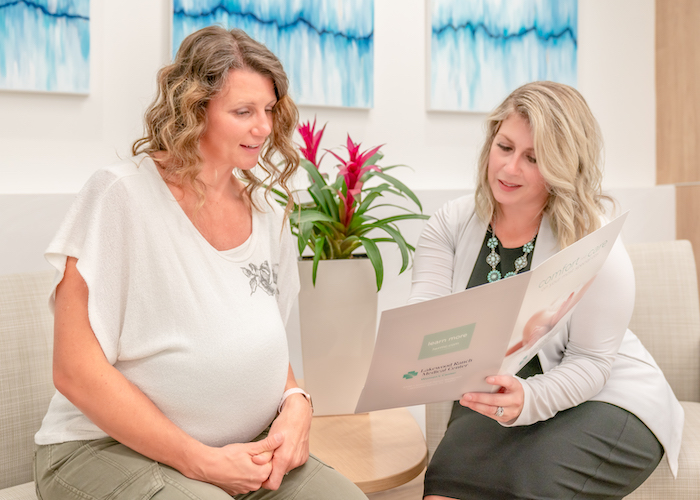Answers to the Questions Patients Ask Most When Creating a Birth Plan
September 21, 2023
by Chrissy Coney, RNC, BSN, CLC, Birth Designer at Lakewood Ranch Medical Center
 The Birth Designer program at the Women’s Center at Lakewood Ranch Medical Center is a unique resource for maternity patients, offering support and guidance to help empower patients with the knowledge they need to create the birthing plan they desire. Understanding what our hospital offers is an important part of creating a birth plan. One of my favorite things about this job is helping to ease fear or anxiety that patients have about labor and delivery. Patients often share at the beginning of our appointment that they are nervous or scared. But by the time they leave, they are excited and less anxious.
The Birth Designer program at the Women’s Center at Lakewood Ranch Medical Center is a unique resource for maternity patients, offering support and guidance to help empower patients with the knowledge they need to create the birthing plan they desire. Understanding what our hospital offers is an important part of creating a birth plan. One of my favorite things about this job is helping to ease fear or anxiety that patients have about labor and delivery. Patients often share at the beginning of our appointment that they are nervous or scared. But by the time they leave, they are excited and less anxious.
Here are answers to some frequently asked questions about creating a birth plan.
What is a birth plan?
Birth plans help us to meet patients’ wishes as much as possible. Some patients use their birth plan to firmly state their intentions for their hospital stay. Others use the plan as a “wish list” for what they would like to see happen during the birthing process. The plan helps to educate new parents on what the hospital can offer. We are aware that not all plans go accordingly. A birth plan can help us to understand the patient’s values. With safety as the top priority, even when circumstances change, we can still try to accommodate the patient’s wishes. The birth plan also helps the nursing staff understand any special patient needs so that everything can be ready for the patient prior to admission. Examples include whether the patient has a special diet or allergies that require ordering appropriate gloves, etc.
What type of information is included?
Your birth plan may include a list of individuals who you would like to be there for support during labor, pain relief options, positions you would like to try during labor and/or pushing preference for delayed cord clamping*, feeding preference for the baby or medications you would like the baby to receive at the hospital. A checklist with ideas of things to pack for your hospital stay can also be included.
Should I involve my doctor and, if so, when?
Absolutely! Involving your provider and discussing your plans for labor should happen at every prenatal visit so that your entire healthcare team is on board when it comes to delivery.
When should I finalize my birth plan?
Patients can start creating their plan at any time during their pregnancy. However, I recommend waiting until closer to the due date before finalizing a plan, in case of the unexpected, such as planning for a natural labor, but then learning that a medical induction is necessary. I usually find it most helpful to meet with patients between 30 and 32 weeks of pregnancy when we typically have a good idea of how the pregnancy is going and can best anticipate and discuss possibilities. Patients also have the right to change their mind about preferences at any time during pregnancy or the labor-and-delivery process.
What if my birth plan does not go as expected?
As they begin creating their birthing plan, I like to point patients to evidence-based research instead of general information that is not well-sourced by medical professionals. It’s important to be realistic when considering every patient’s unique birthing journey. During labor and delivery, it’s sometimes necessary for patients and their healthcare team to make decisions on a minute-to-minute basis. These may not parallel what is in the plan, but they are ultimately what is medically considered best for mom and baby. Having open communication about expectations and the realities of labor and delivery usually helps to curb the disappointment a patient may have when the written birth plan does not unfold exactly as the patient imagined.
“Finally, the most important thing for both mom and baby is to be happy and healthy,” says Coney. “The goal of the birth designer program is to provide patients with the most personalized experience possible, while always keeping safety as a top priority. I also encourage patients to attend our prenatal classes, which offer a wealth of valuable information for new parents.”
View and register for Women’s Center Childbirth and Parenting Classes →
Learn more about award-winning Maternity Services at the Women’s Center →
Source: * Delayed Cord Clamping: A Guide for Healthcare Professionals, https://sph.unc.edu/wp-content/uploads/sites/112/2019/08/CGBI-4-Delayed-Cord-Clamping-2019.pdf
